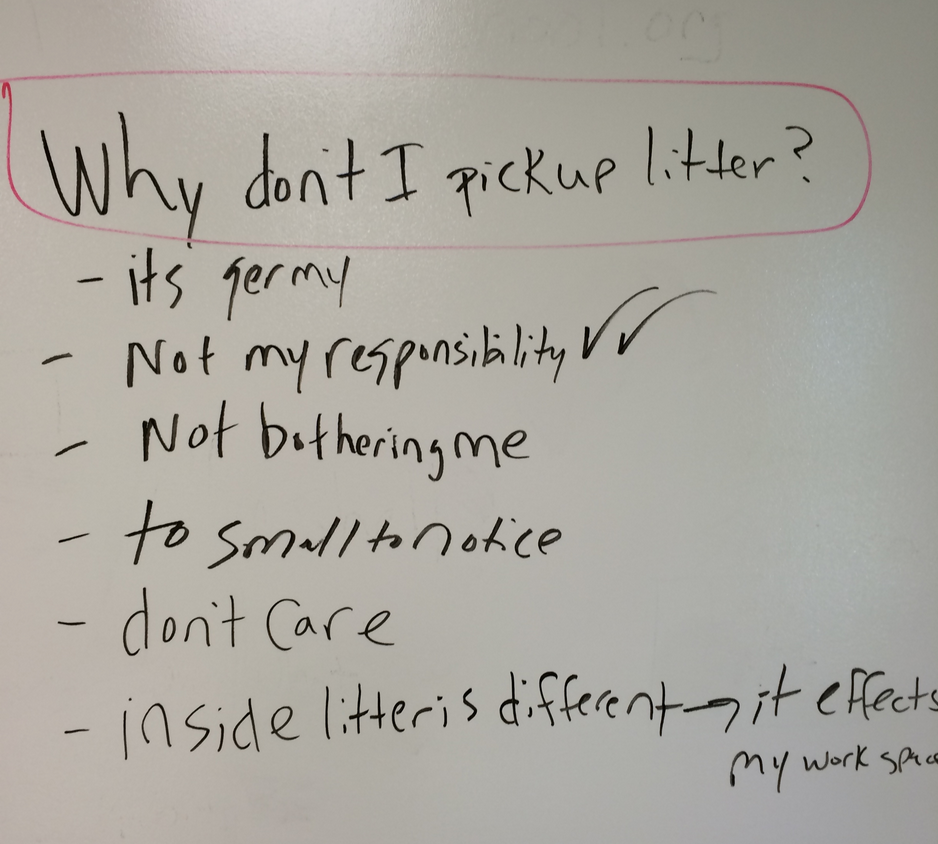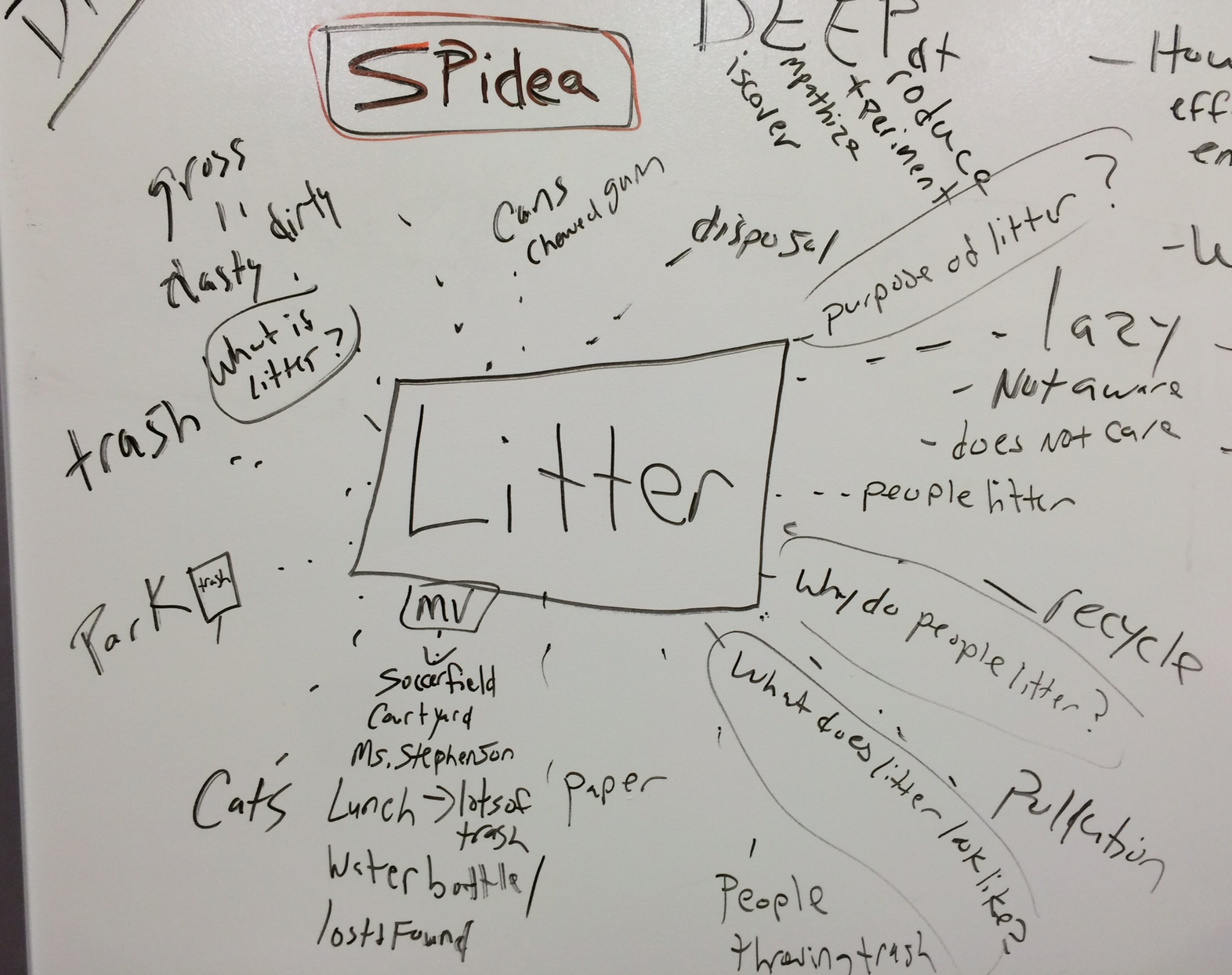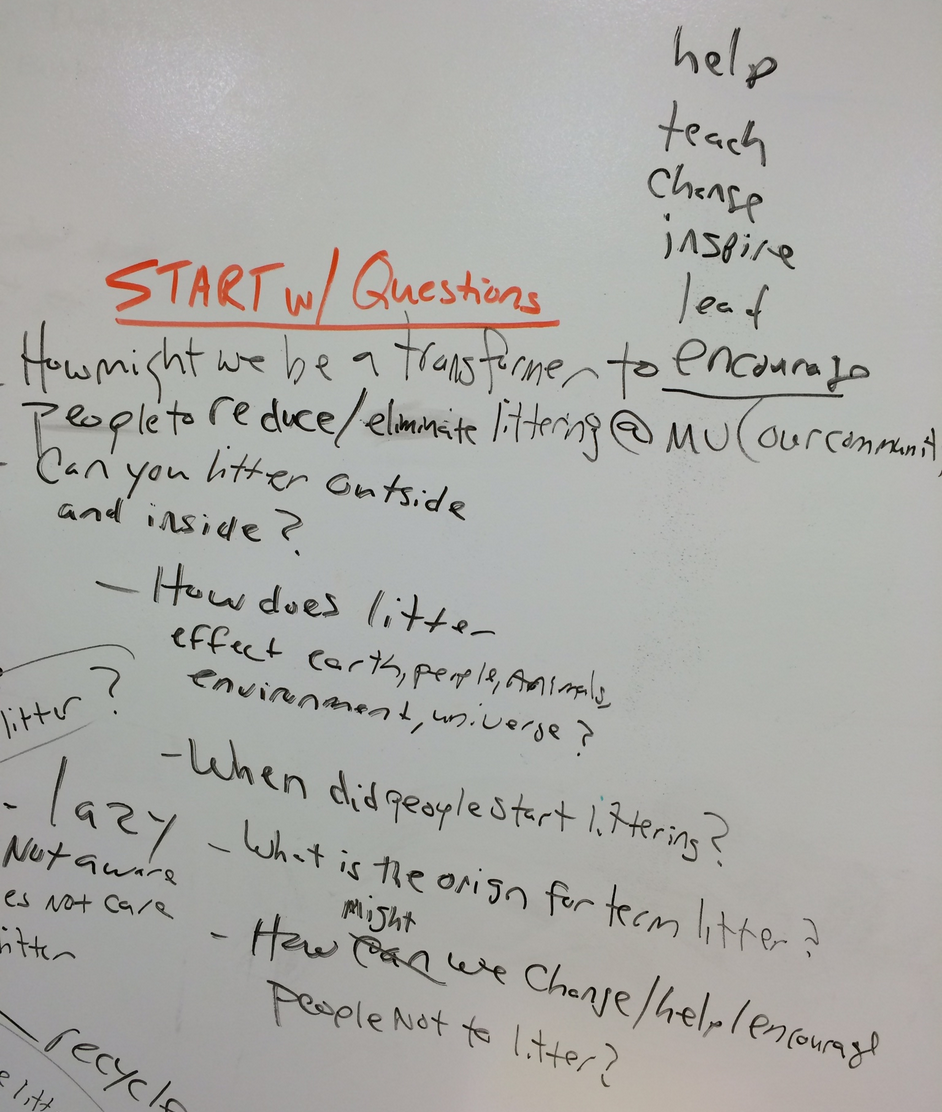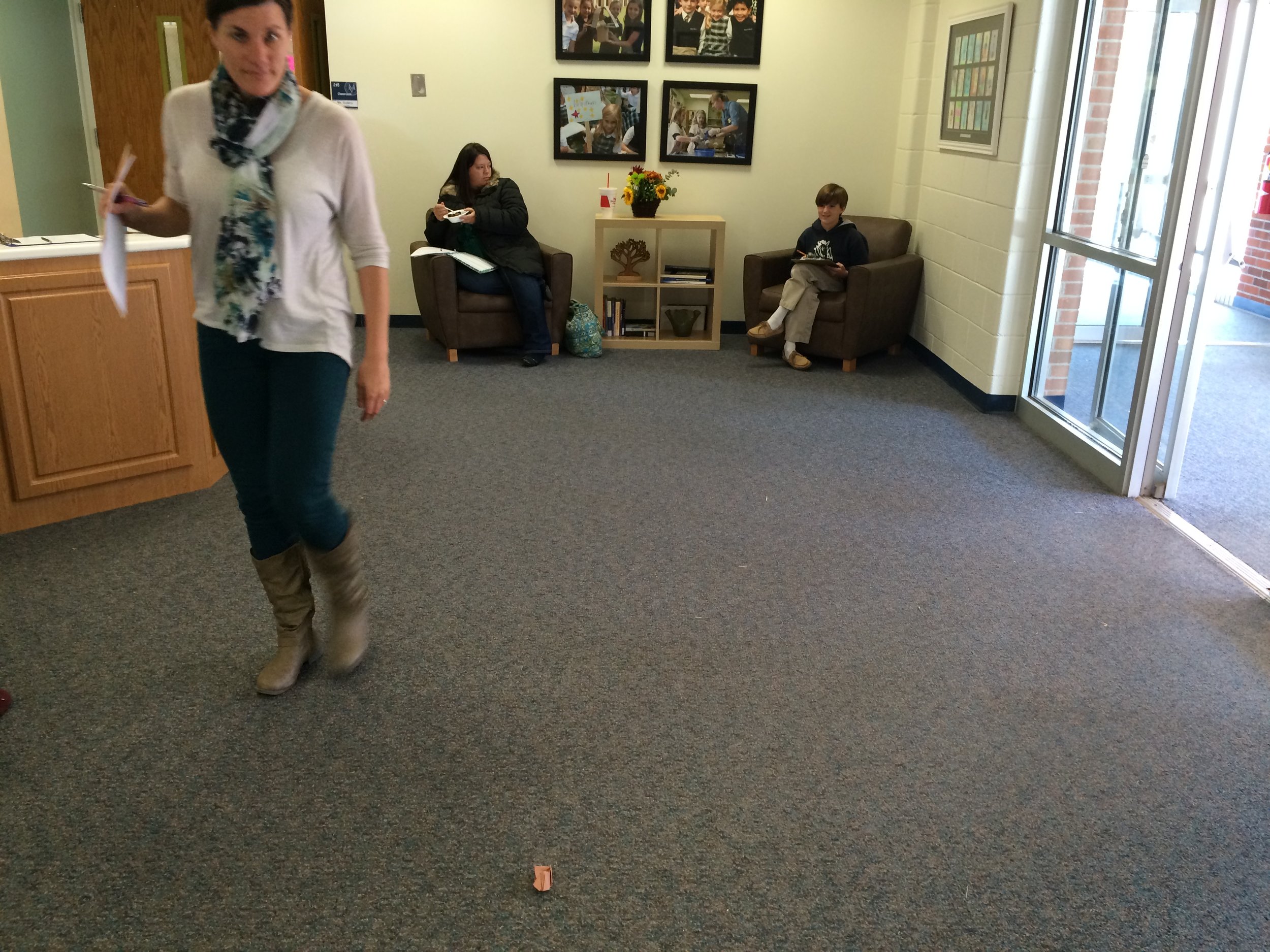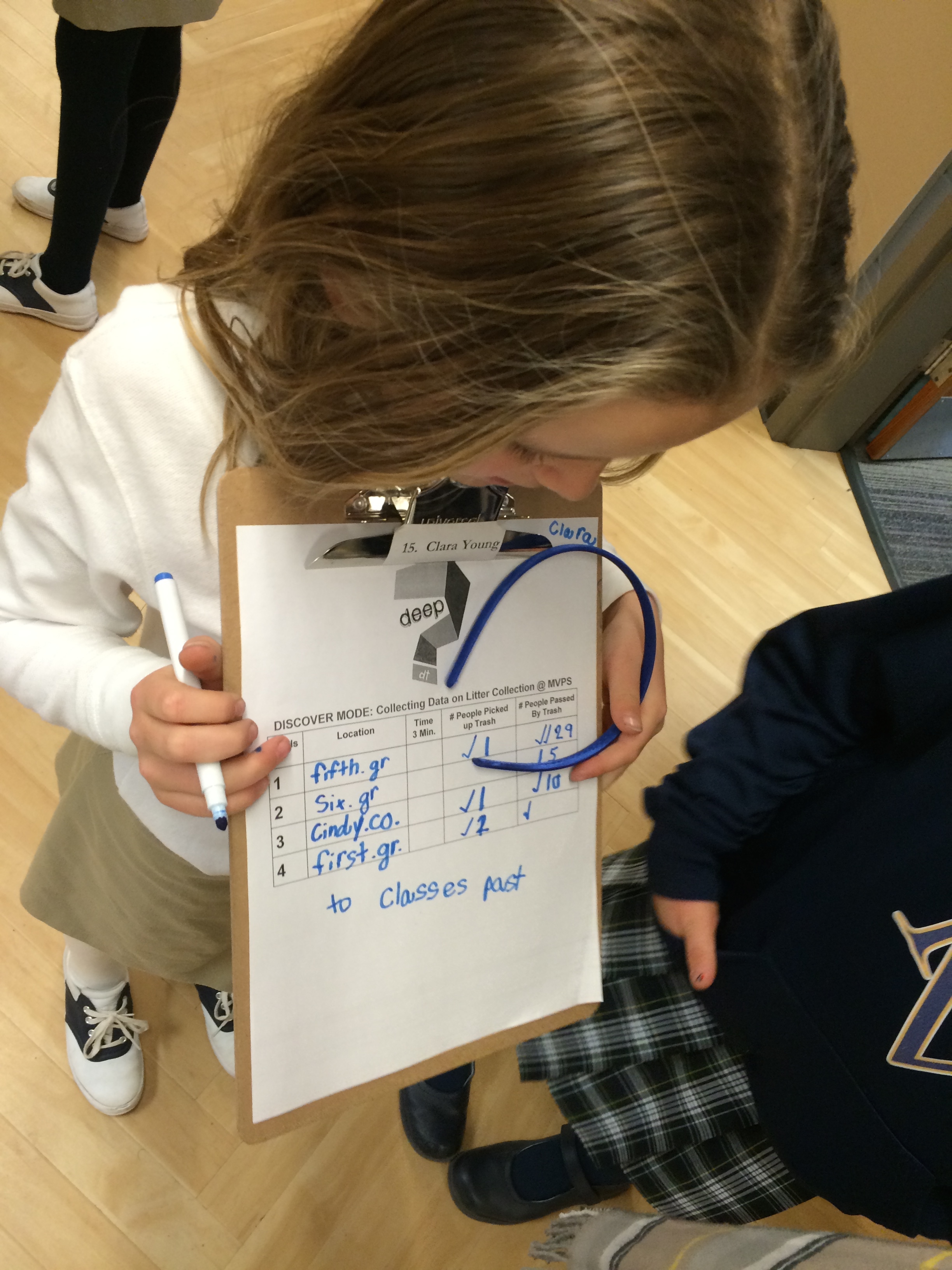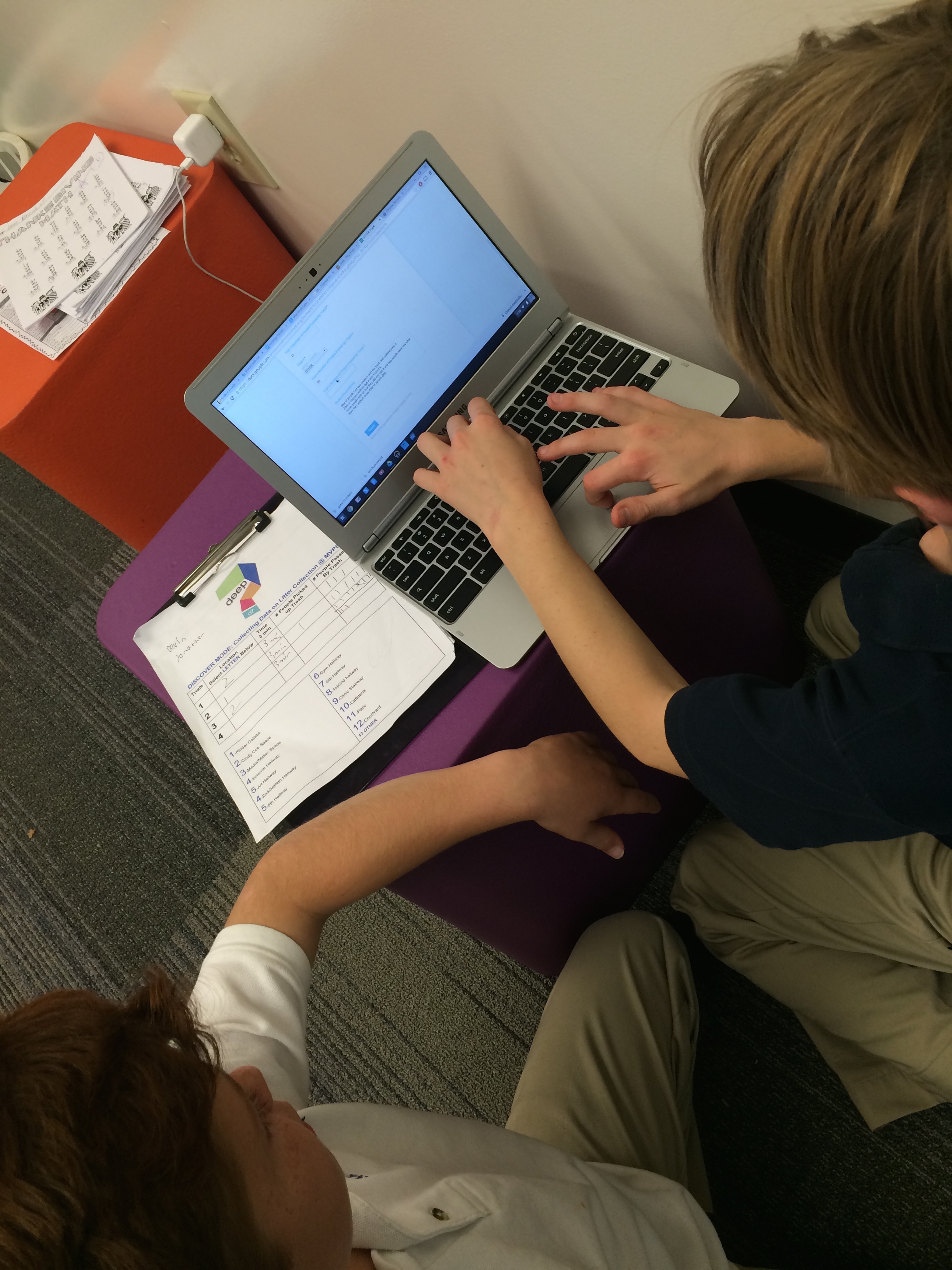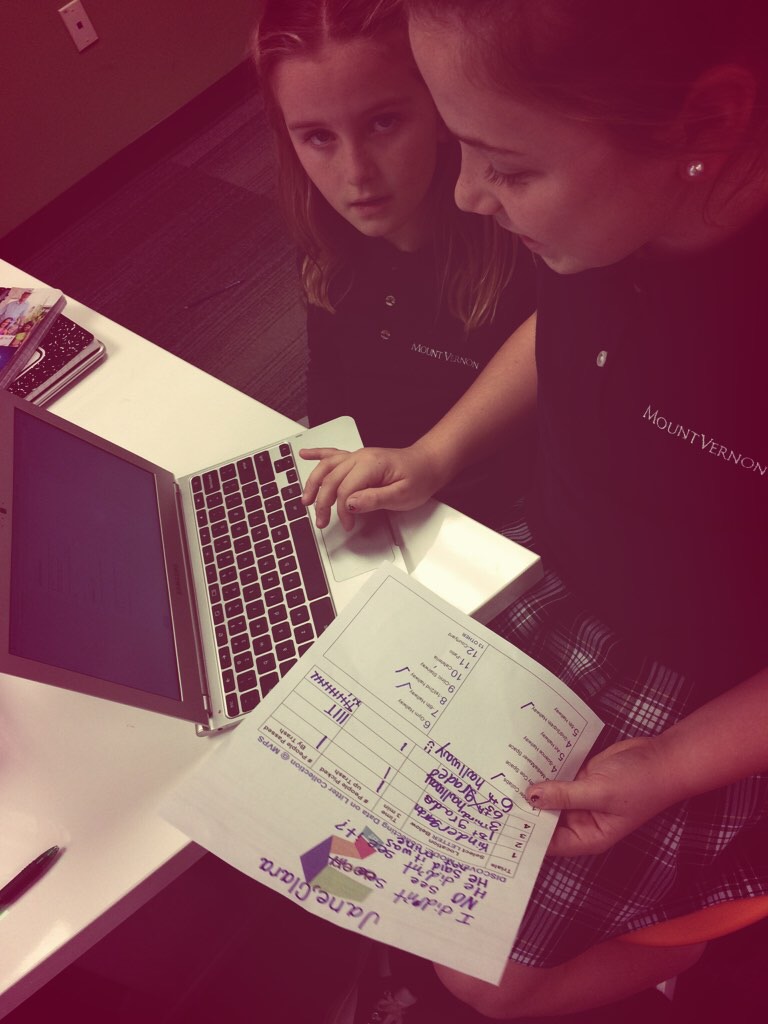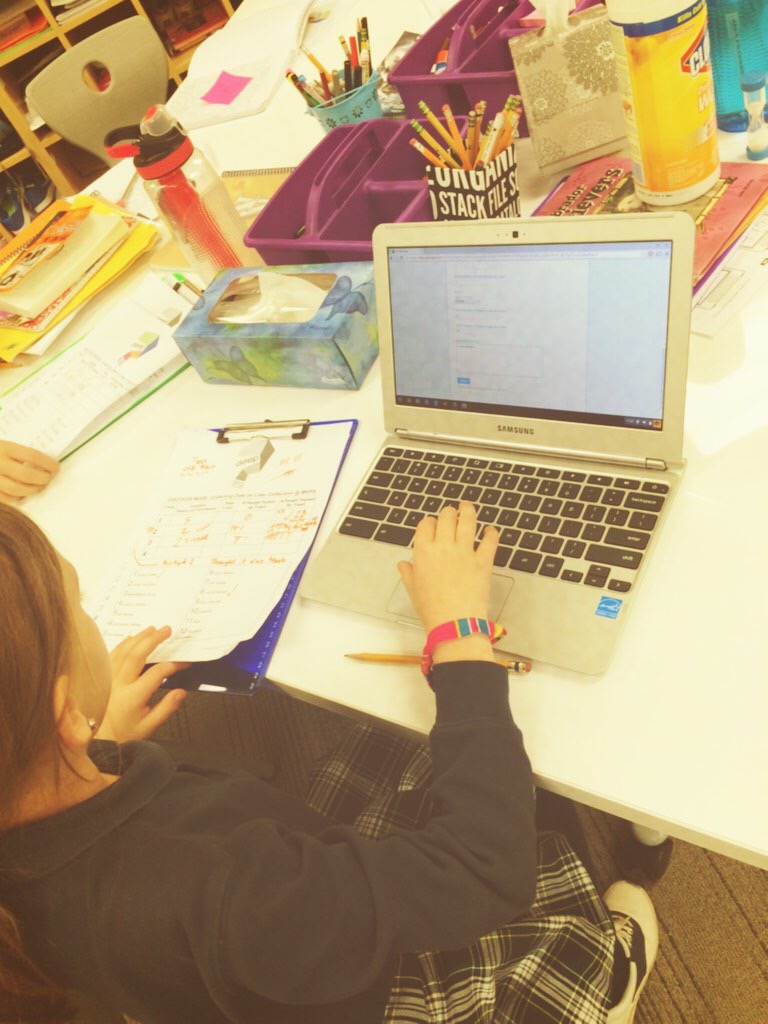A simple Question...a very simple & honest Answer
Update after below post can be found HERE
We have some 3rd grade students conducting a #DEEPdt Challenge around litter in a community. The launching pad to this challenge came in the form of two requests to be better at picking up litter around our campus as well an expression of thought that litter in a community signifies lack of caring.
The students have been collecting a lot of number driven data in this challenge which tends to be on the lighter side of most DEEPdt challenges. Yet, we found litter to be guestimated, countable, totaled, averaged, ranked, measurable, etc The first set of data points gave the designers an area of focus yet gaining understanding for a need or problem around litter was elusive. What were they trying to understand? Why did people litter? Or when there is litter, why do people pass by it or at times pick it up?
As 3rd Graders, they settled on trying to understand why people pass by litter or at times pick it up. During Discover mode, they utilized Q it Up: Start with Questions & Spidea tool from the DEEPdt Playbook to start scratching the surface on this topic: Litter.
Over the last few days, designers have been setting up Litter Traps to collect even more data around litter in the community. Data with a bit more human interaction (Empathize mode). For the first two days of setting Litter Traps, the designers were very hesitant to approach their Users and just wanted to observe their them. This was a good way to stay detached from their needfinding and gauge body language and eyeline of their Users. Routinely the designers's faces revealed shock and awe of how many people just passed by the litter. What was even more surprising to them were the number of adults who passed by. So data was collected, notes taken, but their understanding was limited because there was not that pause in the action to step into the moment, and connect with their Users. Assumptions were being made and conclusions being drawn about their Users by the designers yet a full understanding was still lacking.
"They don't care." "That kid just kicked the trash to get it out of his way." "Ms. _______ walked by the trash three times. She must be blind." "How could he not see it?" "The whole class walked by and lots of the kids looked at the trash but did nothing. They pretended they didn't see it when we saw that they did." "This visitor kept looking at his phone & walk around the trash. He was very busy."
On day three of their Litter Traps data collection, designers were strongly encouraged during their time out in the field to break through the invisible walls they built between them and their Users. "Please talk to your Users. After their interaction with the litter, go up to your User and ask them a simple question like, "Why did you walk by that piece of litter over there?" or "Why did you pick up that piece of litter?"
The Power of Why changed everyones MoVe (Moment of Visible Empathy) perspectives. 75% of Users replied today simply, "I never saw it."
What an amazing and honest answer. I am curious how many other things we pass by throughout the day that if stopped and asked why, we would say simply, "I never saw it." Not that, "I don't care." Not that, "I'm too busy." Not that, "It's not my litter." But simply, "I never saw it." And how quickly we assume something else in others.
